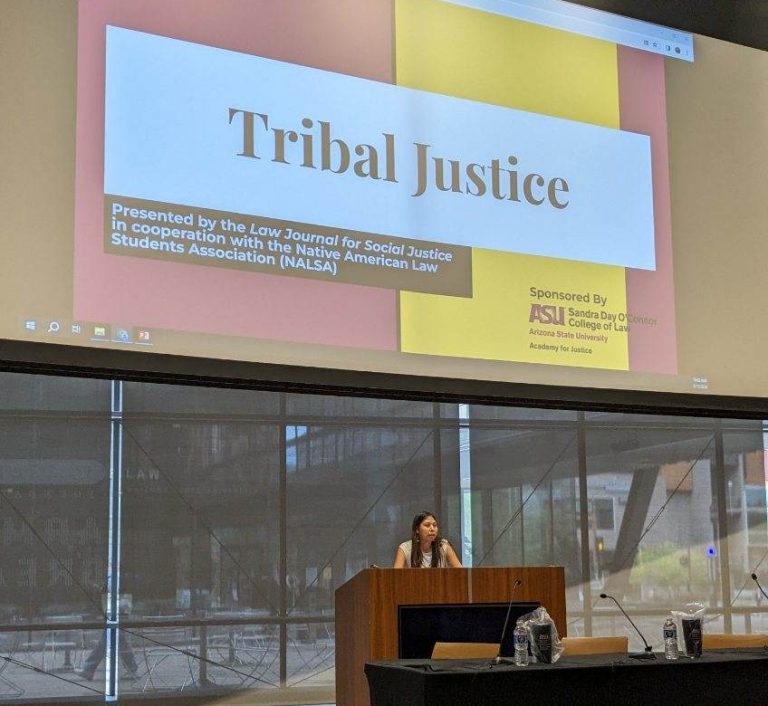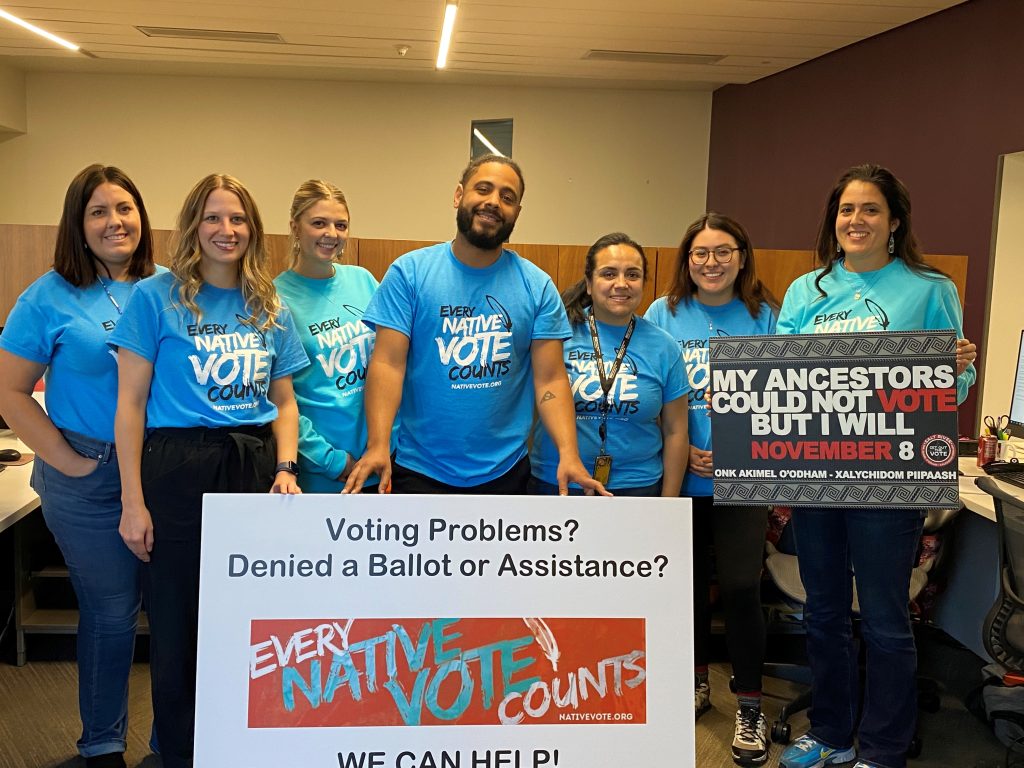
Eight ILP students represented ASU Law at the 33rd National Native American Law Students Association (NNALSA) Moot Court Competition, held on Feb. 14-15, 2025, at the William S. Boyd School of Law, University of Nevada, Las Vegas.
Join us in congratulating our ASU Law competitors: Jerimy Billy (2L), Colten Fredericks (2L), Shandiin Herrera (3L), Hunter Mallinger (2L), Angel Nosie (2L), Justice Oglesby (2L), Sadie Red Eagle (3L) and Monique Tsosie (2L)! This year, our four teams were coached by Indian Legal Clinic Director Patty Ferguson-Bohnee.
Two ASU Law teams — Oglesby and Red Eagle and Herrera and Mallinger — advanced to the Elite 8. Oglesby and Red Eagle earned fifth place for Overall Advocates, while Herrera and Mallinger secured sixth place.
We extend our appreciation to everyone who volunteered their time to help prepare our students for this competition — your support is invaluable!







































































